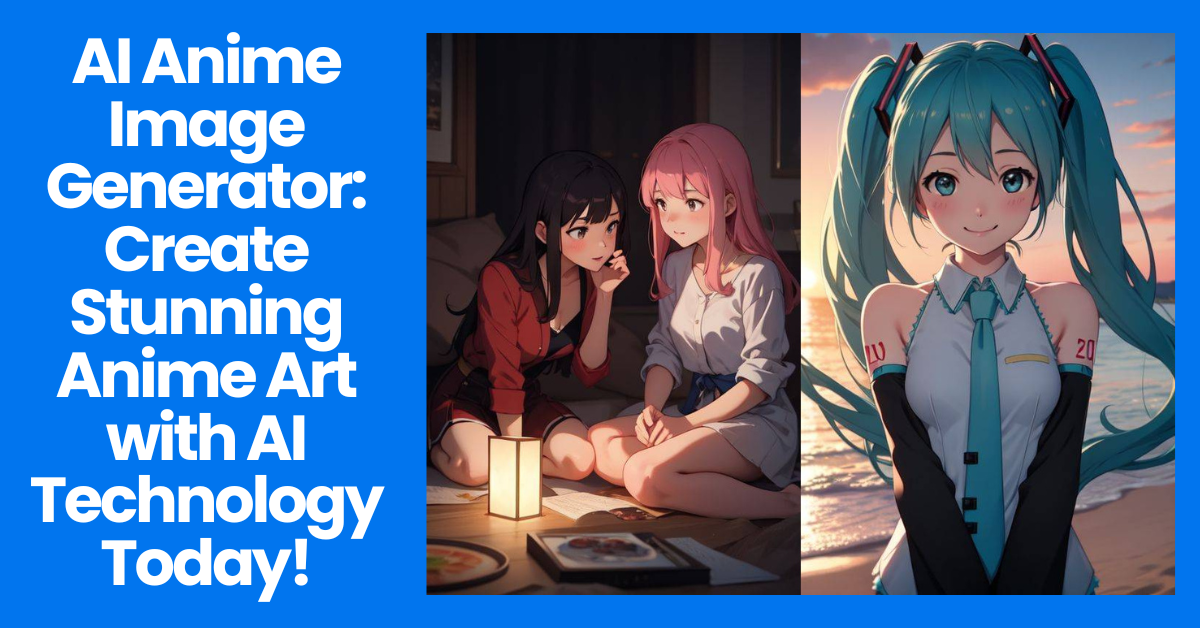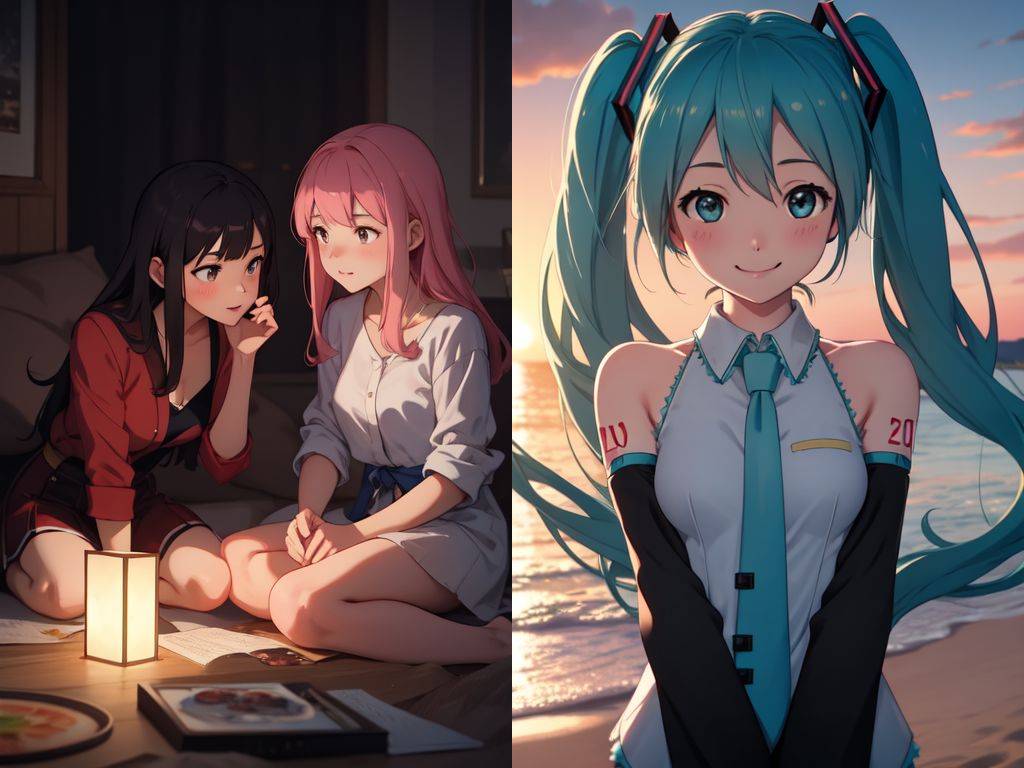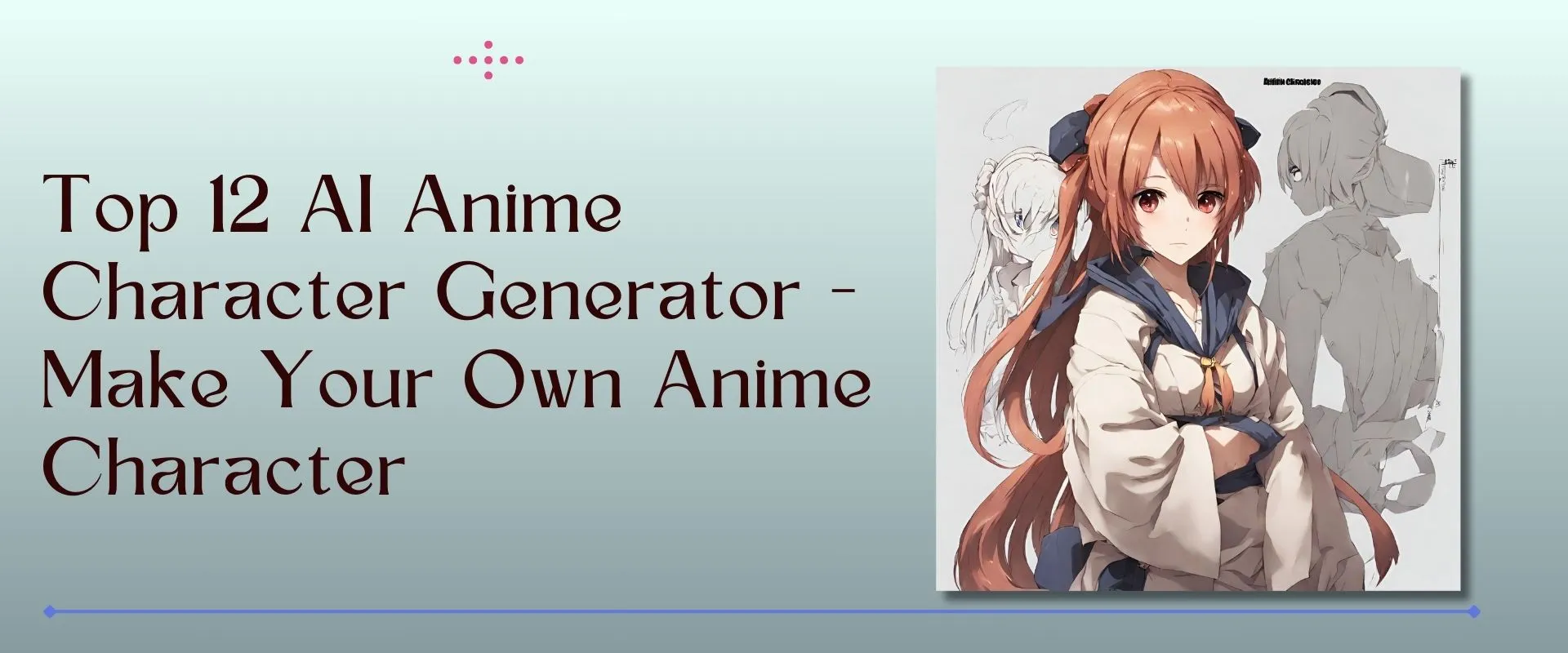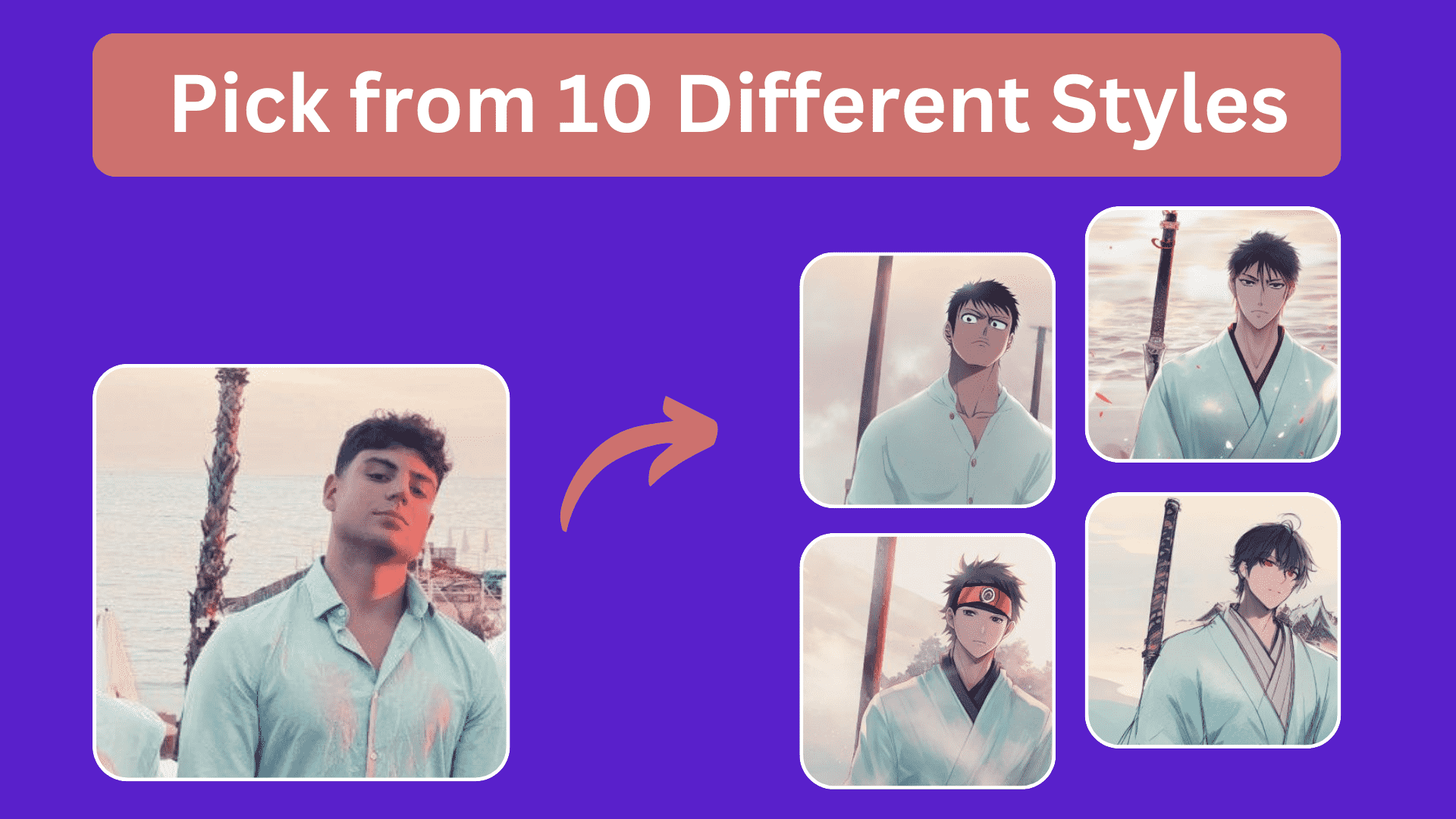
AI Anime Image Generator: Create Stunning Anime Art with AI Technology Today!
- Image Generators
- November 8, 2024
- No Comments
In the digital age, where technology evolves at an unprecedented pace, we are witnessing a transformative shift in the world of art. One area that is particularly experiencing this revolution is anime. Traditionally characterized by hand-drawn artistry and meticulous detail, anime is now entering a new realm powered by artificial intelligence. The rise of AI anime image generators has opened doors to boundless creativity, allowing both artists and enthusiasts to explore new frontiers in visual storytelling. This blog post will delve into the intricate world of AI-powered anime image generation, examining its implications, capabilities, ethical considerations, and its potential future within the anime industry.
AI-Powered Anime Image Generation: A New Era of Artistic Expression

The emergence of AI technology has reshaped various artistic disciplines, and anime is no exception. AI anime image generators serve as powerful tools that not only assist artists but also empower fans to create unique visual content with ease. These generators leverage complex algorithms and deep learning techniques to analyze existing artworks, enabling them to produce images that reflect distinct styles and themes.
Understanding AI Image Generation
At the heart of AI image generation lies machine learning, where systems learn from vast datasets of images to identify patterns and styles. In the context of anime, these generators have been trained on thousands of anime frames, characters, and backgrounds, allowing them to capture the quintessential elements that define this art form.
The technology operates through two main methodologies: Generative Adversarial Networks (GANs) and Variational Autoencoders (VAEs). GANs pit two neural networks against each other—one generating images and the other evaluating their authenticity—leading to an iterative process that results in increasingly refined outputs. VAEs, on the other hand, focus on understanding the underlying data distribution, enabling them to generate variations of existing styles while maintaining coherence.
The Artistic Capabilities of AI
AI-driven generators can produce images that range from realistic to fantastical, encapsulating diverse emotions and aesthetics. This versatility expands the creative landscape for artists. For instance, an artist seeking inspiration for a character design can input a few keywords or sketches, and the AI will generate a range of options based on those inputs. This feature allows creators to experiment without limitations, fostering innovation and spontaneity.
Moreover, these AI tools are becoming more user-friendly, providing accessible interfaces for individuals who may not have traditional artistic skills. As a result, even those with minimal experience can engage in anime creation, bridging the gap between novice fans and established artists.
Collaborative Art: Humans and AI as Partners
Rather than viewing AI as a replacement for human creativity, it is essential to recognize it as a collaborative partner. Artists can harness the power of AI anime image generators to enhance their own work, combining their unique vision with the algorithm’s generative capabilities. This partnership enables artists to push boundaries and explore themes they might not have considered before.
For example, an artist might employ AI to create preliminary sketches, which they can then refine and embellish. This hybrid approach enriches the creative process, leading to the birth of artworks that marry human intuition with computational prowess.
The Future of Anime: How AI is Transforming Visual Storytelling

As anime continues to evolve, the integration of AI technology is redefining the narrative landscape. The ability to generate captivating imagery can significantly impact how stories are told, experienced, and shared across various platforms.
Enhanced World-Building
One of the most significant contributions of AI to anime storytelling is its potential for immersive world-building. AI-generated landscapes and environments allow creators to visualize entire worlds, filled with unique cultures, histories, and aesthetics. With the assistance of AI, storytellers can focus on developing intricate plots and character arcs, knowing that the visual representation of their universe can be generated with precision.
Imagine a sprawling fantasy world with breathtaking vistas, bustling cities, and enigmatic ruins—all crafted through the lens of AI. Such capabilities offer storytellers a blank canvas to develop narratives that resonate with audiences emotionally.
Interactive Narratives
The fusion of AI with anime opens avenues for interactive storytelling experiences. Viewers could influence the direction of the plot by choosing character designs or altering settings. This level of engagement transforms passive consumption into active participation, creating a deeper connection between creators and audiences.
Furthermore, AI can tailor narratives based on individual preferences. By analyzing viewer behaviors and choices, AI systems can dynamically adjust storylines to cater to specific demographics, enhancing the overall enjoyment of the anime experience.
Democratization of Creation
The accessibility of AI anime image generators democratizes the anime creation process. As barriers to entry lower, individuals from diverse backgrounds and skill levels can contribute to the medium. This influx of fresh ideas and perspectives enriches the anime landscape, resulting in innovative narratives and styles that challenge conventions.
Additionally, as more people engage with AI-driven storytelling, we may witness the emergence of subcultures and niches within the anime community. These diverse voices and interpretations can breathe new life into the genre, further expanding its reach and influence.
Beyond Imagination: Exploring the Capabilities of AI Anime Generators

The capabilities of AI anime image generators extend far beyond mere image production. These powerful tools enable users to tap into their imagination and bring forth ideas that were once confined to thought.
Style Transfer and Customization
One of the remarkable features of AI generators is their ability to perform style transfer. Users can take existing artworks and modify them by applying different styles, effectively blending multiple influences into one cohesive piece. For example, a user could input a classic anime style and transform it into a contemporary one, creating a mash-up that resonates with both nostalgia and modernity.
Customization further enhances the creative possibilities. Users can define specific attributes of characters or scenes—such as hair color, facial expressions, and clothing—and the AI will generate options that align with those parameters. This flexibility empowers creators to mold their visions according to personal tastes.
Animation Capabilities
While still in its infancy, AI technology is beginning to make strides in animated content creation. Recent advancements have led to experiments with AI-generated animations that mimic the fluidity and expressiveness of traditional anime. By analyzing motion sequences and frame transitions, AI can create movement that feels authentic, bringing static images to life.
This development holds immense potential for indie creators and small studios, who often lack the resources to produce high-quality animations. With AI-generated animations, they can generate content at a fraction of the cost and time, opening doors to new storytelling formats and opportunities.
Real-Time Collaboration
Another exciting frontier for AI in anime creation is real-time collaboration. Imagine a scenario where multiple artists across the globe contribute to a single project using AI tools. They could share their ideas, tweak generated images, and collaborate in a virtual space, all facilitated by AI algorithms that streamline the creative process.
This collaborative environment fosters community building within the anime industry. It encourages shared ownership of ideas and promotes collective growth among creators, ultimately leading to a richer tapestry of narratives and visuals.
From Concept to Canvas: A Step-by-Step Guide to Using AI for Anime Image Creation
Harnessing the power of AI anime image generators may seem daunting, but the process can be quite straightforward and enjoyable. This section outlines a step-by-step guide to help aspiring creators make the most of these innovative tools.
Step 1: Choosing the Right AI Tool
The first step in your creative journey is selecting an appropriate AI generator. Numerous platforms boast unique features and capabilities. Some popular options include Artbreeder, DeepArt, and PaintsChainer, each with its strengths and weaknesses.
Before making a decision, consider the following:
- User Interface: Choose a platform that feels intuitive and easy to navigate.
- Customizability: Look for tools that offer customization options tailored to your creative needs.
- Community Support: Engaging with a platform that has an active community can provide valuable insights and inspiration.
Step 2: Gathering Inspiration
Once you’ve chosen your AI tool, gather inspiration to inform your creative direction. Explore art styles, themes, and character designs that resonate with you. Platforms like Pinterest, DeviantArt, and Behance can serve as excellent sources of visual stimuli.
Create a mood board or a collection of references that encapsulate the essence of what you want to create. This preparatory phase will help you clarify your goals and establish a framework for your project.
Step 3: Inputting Ideas into the Generator
With your inspiration in mind, it’s time to interact with the AI generator. Most tools allow users to input text prompts, upload sketches, or select predefined styles. Experiment with different combinations to see how the AI responds.
Be open to serendipity—sometimes, unexpected outcomes can lead to groundbreaking ideas. If a generated image sparks new concepts, don’t hesitate to explore those directions further.
Step 4: Refining Your Artwork
Once the AI generates an initial image, the next step is refinement. Utilize digital art software such as Photoshop or Clip Studio Paint to enhance details, add textures, and incorporate personal touches. This stage is where your unique artistic voice can shine through, transforming the AI-generated base into a fully realized artwork.
Step 5: Sharing and Collaborating
After refining your artwork, consider sharing it with the broader community. Platforms like Instagram and Twitter allow creators to showcase their work and connect with fellow anime enthusiasts. Engaging with others can lead to constructive feedback, collaborations, and new friendships.
Moreover, actively participating in discussions about AI and anime can deepen your understanding of this fascinating intersection, inspiring new heights of creativity.
Unlocking Creativity: How AI is Empowering Artists and Fans in the Anime Community
The integration of AI anime image generators has not only redefined how art is created but also fostered a sense of empowerment among both artists and fans.
Tools for Everyone
One of the most profound impacts of AI on the anime community is the accessibility of creative tools. Previously, skilled artists required years of practice to master traditional techniques. With AI generators available, individuals can quickly create visually appealing content, regardless of their prior experience.
This democratization of creativity means that anyone can express themselves through anime, leading to a surge of diverse voices and perspectives. Many fans who previously felt excluded from the art-making process can now participate and contribute their unique ideas, enriching the anime community as a whole.
Bridging Cultural Gaps
AI also serves as a bridge across cultural divides within the anime community. By providing tools that transcend language barriers, creators from different regions can collaborate on projects, share techniques, and inspire one another. This cross-pollination of ideas fosters global appreciation for anime culture, elevating its status as a universal form of artistic expression.
Additionally, AI-generated works can introduce audiences to lesser-known styles and traditions, broadening their understanding of the medium. Anime’s evolution becomes a collective journey rather than a solitary endeavor.
Fostering Innovation
As artists and fans embrace AI anime image generators, the continuous exploration of new ideas leads to innovative developments in storytelling and visual aesthetics. This environment nurtures experimentation, encouraging creators to push the limits of their imaginations.
By breaking free from conventional constraints, artists can discover fresh approaches to character design, world-building, and narrative construction. Consequently, the anime community thrives on its dynamic nature, ensuring that the medium remains relevant and engaging for both seasoned fans and newcomers alike.
The Ethical Considerations of AI Anime Image Generators
While the rise of AI anime image generators presents exciting opportunities, it also raises important ethical questions regarding art, authorship, and the implications of creativity in the digital age.
Ownership and Copyright Issues
One of the primary challenges surrounding AI-generated art is the question of ownership. When an artist uses an AI generator to create an image, who owns the final product? The creator, the platform developers, or the dataset from which the AI learned?
These questions can lead to complex legal quandaries. As AI technology continues to advance, establishing clear guidelines regarding intellectual property rights and copyright protections becomes increasingly crucial to maintain fairness and transparency in the creative community.
Authenticity and Originality
The proliferation of AI-generated art has sparked debates about authenticity and originality. Some argue that works produced by machines lack the depth and emotional resonance inherent to human-created art. While it’s true that AI cannot replicate human experiences, it can still produce striking visuals that evoke strong reactions.
The key is finding balance—integrating AI-generated works into a broader artistic conversation that values diverse forms of expression. Embracing AI doesn’t diminish the importance of human creativity; instead, it enhances the variety of artistic voices present in the anime community.
Bias and Representation
Another critical consideration is the potential bias embedded in AI algorithms. Since these systems learn from existing datasets, they may inadvertently reinforce stereotypes or perpetuate exclusionary practices. For instance, if an AI is primarily trained on Western anime styles, it may struggle to accurately represent non-Western influences.
Addressing these biases requires vigilance and intentionality. Developers must ensure that datasets are representative and inclusive, promoting diverse perspectives within the AI-generated output. By doing so, the anime community can work towards a more equitable and reflective artistic landscape.
AI and the Evolution of Anime Art: A Comparative Analysis
To appreciate the significance of AI anime image generators, it’s essential to understand how they compare to traditional and contemporary forms of anime art. This section explores the differences, similarities, and intersections between these approaches.
Traditional Anime Artistry
Traditional anime art relies heavily on manual labor, involving countless hours of sketching, inking, and coloring. Artists pour their emotions and experiences into each piece, often resulting in deeply personal creations. This craftsmanship embodies the spirit of anime and fosters a profound connection between the artist and their work.
However, this time-consuming process can limit artistic output and hinder experimentation, especially for independent creators. Additionally, market demands may pressure artists to conform to prevailing trends, stifling innovation and the exploration of unique styles.
Contemporary Digital Art
The advent of digital art has significantly transformed the anime landscape. Artists now utilize software tools like Photoshop, Clip Studio Paint, and Procreate to streamline workflows and enhance artistic capabilities. This shift allows for greater experimentation, as creators can easily manipulate colors, layers, and effects.
Yet, digital art still requires a certain level of expertise and knowledge of technology. Aspiring artists may face steep learning curves, deterring some from pursuing their passion. The introduction of AI generators addresses this issue by lowering the barrier to entry.
AI-Driven Art Generation
AI anime image generators represent the forefront of innovation in anime art. They combine the efficiency of digital tools with the creative potential of machine learning, producing impressive results in a fraction of the time required for traditional methods.
Unlike traditional artistry, which is often tied to personal experiences, AI-generated art relies on patterns and data derived from existing works. This distinction raises questions about the nature of creativity—can AI truly create art, or does it merely remix what it has learned?
Ultimately, while traditional and digital artistry celebrate human creativity, AI presents a new frontier where technology collaborates with artists to push the boundaries of expression. Rather than replacing existing approaches, AI generators serve as tools that expand the creative toolkit available to artists.
The Impact of AI on the Anime Industry: Opportunities and Challenges
The integration of AI anime image generators has the potential to reshape the anime industry significantly. While the opportunities for innovation and growth are abundant, there are also notable challenges that need to be addressed.
Streamlining Production Processes
One of the most immediate advantages of AI in anime production is its ability to streamline workflows. By automating repetitive tasks, such as background generation or character modeling, AI can save studios a considerable amount of time and resources. This efficiency allows creators to focus on storytelling and character development, ultimately elevating the quality of the final product.
Moreover, smaller studios and independent creators stand to benefit immensely. With AI tools at their disposal, they can produce high-caliber content with limited budgets, leveling the playing field within the industry.
Expanding Creative Horizons
As previously mentioned, AI anime image generators empower creators to explore uncharted territories in terms of design and storytelling. This newfound freedom encourages experimentation, resulting in unique narratives and styles that may have otherwise remained unexplored.
This expansion of creative horizons can lead to the emergence of novel subgenres and alternative storytelling methods, enriching the anime landscape and attracting new audiences. As creators push the boundaries of imagination, the potential for innovation appears limitless.
Navigating Industry Resistance
Despite the promising prospects, the anime industry is not without its challenges. Resistance to change is a natural response, especially among those who fear that AI-generated content may undermine traditional artistry. Established studios may be hesitant to embrace AI technologies due to concerns over quality, authenticity, and the preservation of artistic integrity.
Strategic conversations within the industry are essential to address these apprehensions. By highlighting the benefits of AI while respecting traditional craftsmanship, stakeholders can forge a path that honors both legacy and innovation.
Beyond Stills: AI’s Potential for Animated Content Creation in the Anime World
While much of the discussion around AI anime image generators focuses on still images, the potential applications in animated content creation are equally noteworthy. The animation landscape is ripe for transformation through the integration of AI technologies.
Automating Frame Generation
Traditionally, animation involves creating numerous frames to convey fluid motion. This meticulous process can be labor-intensive, requiring extensive planning and execution. AI has the potential to automate aspects of frame generation, resulting in smoother animations with fewer resources.
By leveraging algorithms that predict motion based on keyframes, AI can create intermediate frames that seamlessly connect movements. This capability can accelerate production timelines, allowing studios to release content more rapidly and efficiently.
Enhancing Animation Quality
Beyond automation, AI can elevate the quality of animations by optimizing style consistency and fluidity. An AI model trained on various animation styles can ensure that characters maintain their design principles throughout different scenes and actions, enhancing the viewing experience.
Additionally, AI-driven tools can analyze pacing and timing, helping creators refine animations for maximum impact. This optimization enables studios to produce higher-caliber animations that resonate with audiences emotionally.
Creating Dynamic Content
As AI continues to evolve, there’s potential for dynamic content that adapts based on viewer preferences. Imagine an animated series where character interactions or plot developments shift depending on audience choices.
Integrating AI in this manner would create a highly personalized viewing experience, blurring the lines between traditional linear storytelling and interactive entertainment. This innovation could redefine how audiences engage with anime, ushering in a new era of immersive storytelling.
The Rise of AI-Generated Anime: A Look at the Leading Tools and Technologies
As the popularity of AI anime image generators surges, numerous tools and technologies have emerged to facilitate anime creation. This section explores some of the leading platforms and their unique offerings.
Artbreeder
Artbreeder is a pioneering platform that allows users to blend images and styles, creating hybrid artworks. Its user-friendly interface lets artists input various attributes and watch as the AI generates new images based on those criteria.
With Artbreeder, users can create character designs, landscapes, and even abstract concepts. Its collaborative features encourage community engagement, as users can build on each other’s creations, fostering a rich creative ecosystem.
DeepArt
DeepArt employs the power of neural networks to apply artistic styles to images, transforming photographs and sketches into stunning artworks reminiscent of famous painters. This tool excels in style transfer, enabling anime artists to experiment with distinctive aesthetics.
DeepArt’s easy-to-use interface makes it accessible for users of all skill levels, empowering them to create visually striking pieces without the need for extensive artistic training.
PaintsChainer
PaintsChainer stands out as an AI-based coloring tool designed specifically for anime-style works. Users can upload line art, and the AI automatically fills in colors based on the artist’s preferences.
This tool simplifies the coloring process and saves time, allowing artists to focus on other aspects of their work. With customizable palettes and styles, PaintsChainer offers flexibility to suit various artistic visions.
Runway ML
Runway ML is an innovative AI platform that provides tools for creatives, including those interested in animation and video content. Its capabilities extend beyond still images, offering features like real-time collaboration and integration with popular creative software.
Runway ML empowers artists to merge AI-generated elements into their projects effortlessly, expanding the possibilities for animated content creation. Its versatility positions it as a game-changer for creators looking to incorporate cutting-edge technology into their workflows.
Conclusion
The emergence of AI anime image generators marks a pivotal moment in the evolution of anime and artistic expression. With the power of AI, artists and fans alike can explore new creative possibilities, pushing the boundaries of traditional artistry and storytelling. The integration of AI in the anime industry presents both opportunities for innovation and challenges that require thoughtful consideration.
As we move forward, it is essential to strike a balance between embracing technological advancement and preserving the core principles of artistry and creativity. By fostering collaboration between human creators and AI tools, we can unlock a new era of artistic expression that celebrates diversity, inclusivity, and innovation.
The journey of AI in the anime landscape is just beginning, and the possibilities are as vast as the imagination itself. As artists and fans continue to explore this frontier, we can expect to witness a thrilling evolution in the world of anime, driven by creativity, technology, and the indomitable spirit of collaboration.
Looking to learn more? Dive into our related article for in-depth insights into the Best Tools For Image Generation. Plus, discover more in our latest blog post on ai generated beautiful flower images with blurred background . Keep exploring with us!
Related Tools:
Image Generation Tools
Video Generators
Productivity Tools
Design Generation Tools
Music Generation Tools
